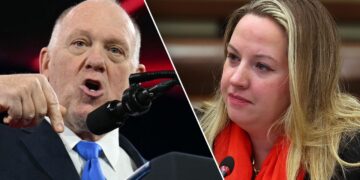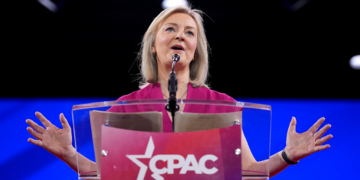Commentary
The job of Reserve Bank of Australia’s (RBA) governor might be one to dodge at the moment, but having waited 38 years for the opportunity I guess new Governor Michele Bullock was not going to say no.
There are a lot of challenges sitting in her in-tray from day one, including expansionary federal and state government policy; increasing red tape; inflationary energy prices; recommendations from the review of the RBA; the high probability there will be a recession; housing prices that refuse to deflate; plus the decoupling from China.
In this day and age of portfolio careers, 38 years is a long time to work for the same business. It almost speaks lack of ambition. It’s certainly a career lacking in that most modern of qualifications—diversity.
I’d certainly find it more reassuring if the new bank governor had experience in what some call the “real world.”
Being RBA governor doesn’t require Nobel Laureate-level academic prowess, but it does require an understanding of how the world works. Setting interest rates is an art as much as a science.
Graphs and tables can tell you so much, but having tried to negotiate the business world amongst the facts and figures that inform them can tell you so much more.
Michele Bullock is replacing Philip Lowe, who is portrayed by many as a failure. As the current deputy governor, if that is true, then shouldn’t Lowe’s replacement share some of the blame?

But we probably invest too much importance in the governor, and Ms. Bullock comes to the role at a time when the government is determined to make the board more accountable, and less reliant on one economist.
If the idea of a separate board of five economists to set interest rates is adopted, then her role will be skewed toward managing the rest of the operation.
The Gauntlet Ahead for the RBA
As Lowe’s term ends the challenges for the central bank grow larger. Some say that the inflation target of 2-3 percent on average over time is too vague.
The RBA’s target is now going to get even vaguer because it is being given the mutually incompatible twin targets of inflation between 2 and 3 percent and full employment.
What is full employment?
No one really knows. The Non-Accelerating Inflation Rate of Unemployment (NAIRU) used to be thought to be around 4 to 4.5 percent.
Then the empirical evidence seemed to contradict that as unemployment fell below that level while inflation appeared almost nonexistent.
My bet is that 4 to 4.5 percent is about right and that lower figures were possible only because of deflation in the cost of goods because they were increasingly manufactured overseas at lower labour costs and with overseas government subsidies, and much of the inflation being corralled in an increase in asset prices.
But Ms. Bullock may find her critics saddling her with the recent past’s unrealistic NAIRU expectations, and they may be inflationary today when the deflationary spiral of imported goods prices appears to have ended.
It is certain that an overly tight jobs market will fuel inflation, and pay deals, like the one just negotiated by National Australia Bank for 17.5 percent in pay increases over four years, could be just the beginning.

She also has the state and federal governments spending in excess of the capacity of the economy, redirecting funds from things like housing and discretionary spending, which will make electors angry.
It will also probably mean she will need to either keep hiking interest rates or keep them around current rates for quite some time.
In fact, history suggests that somewhere around current rates is probably where they should be. And as they are lower than rates elsewhere in the OECD, such as the United States where the Fed is targeting rates at between 5 percent and 5.25 percent, there is an argument they should stay around this level from an exchange rate point of view.
Added to that is the high probability of a recession. She will get the blame for this but recessions are virtually impossible to avoid when contracting monetary supply.
And despite popular belief to the contrary, they are a good thing.
The effort since 1993 to avoid recessions has led to inflation of assets, over-borrowed balance sheets, and company managements that have forgotten, or never learned, how to manage a tight ship.
This means that recessions are actually needed more than ever, as they re-educate flabby management, and sweep away the worst performers, clearing the way for the better-managed companies to survive and then flourish.
All this is before Ms. Bullock. I wish her well, and that she has the strength of her surname’s namesake.

Views expressed in this article are the opinions of the author and do not necessarily reflect the views of The Epoch Times.
















 The Black Swan Approaching
The Black Swan Approaching




















 Reaction & Commentary
Reaction & Commentary









